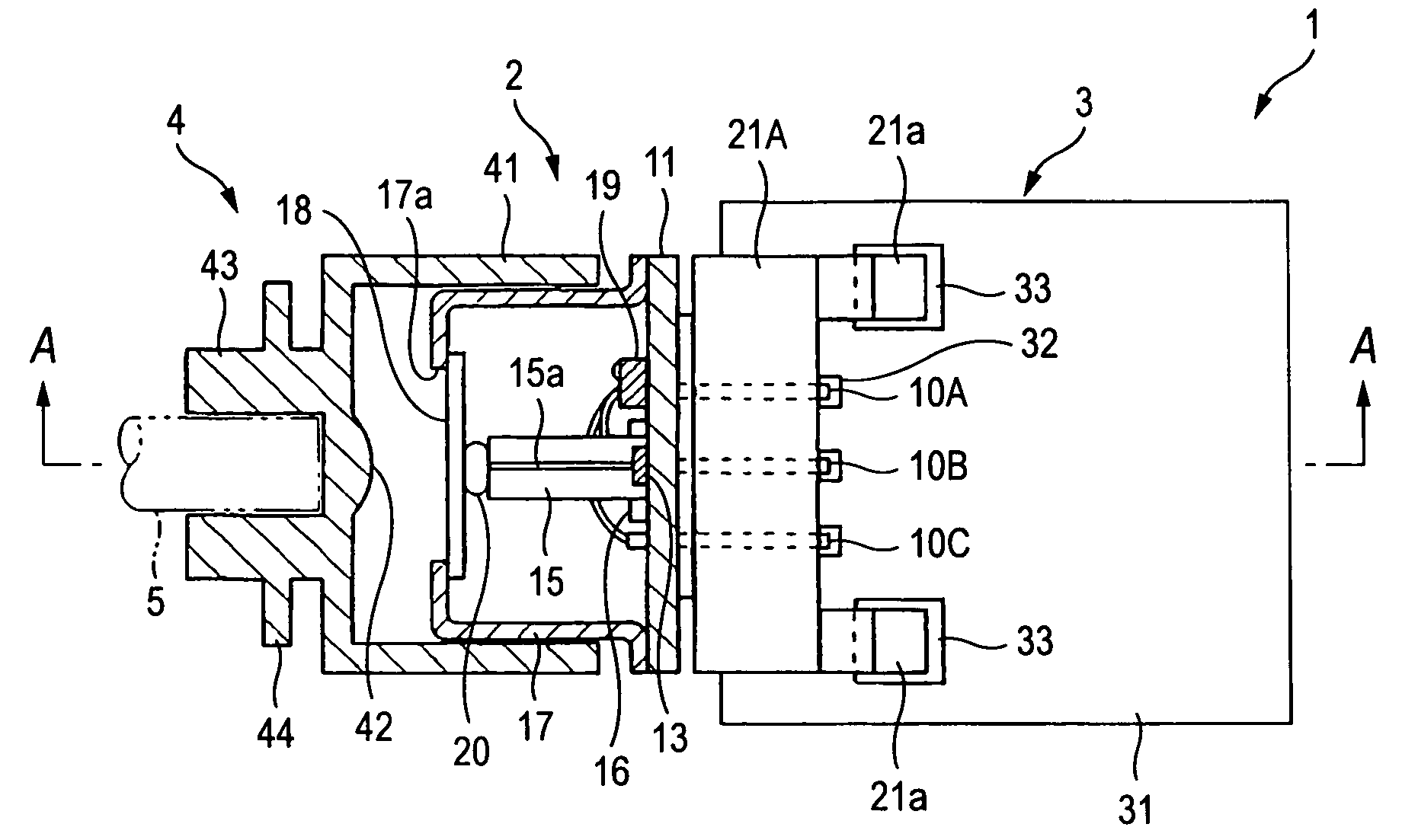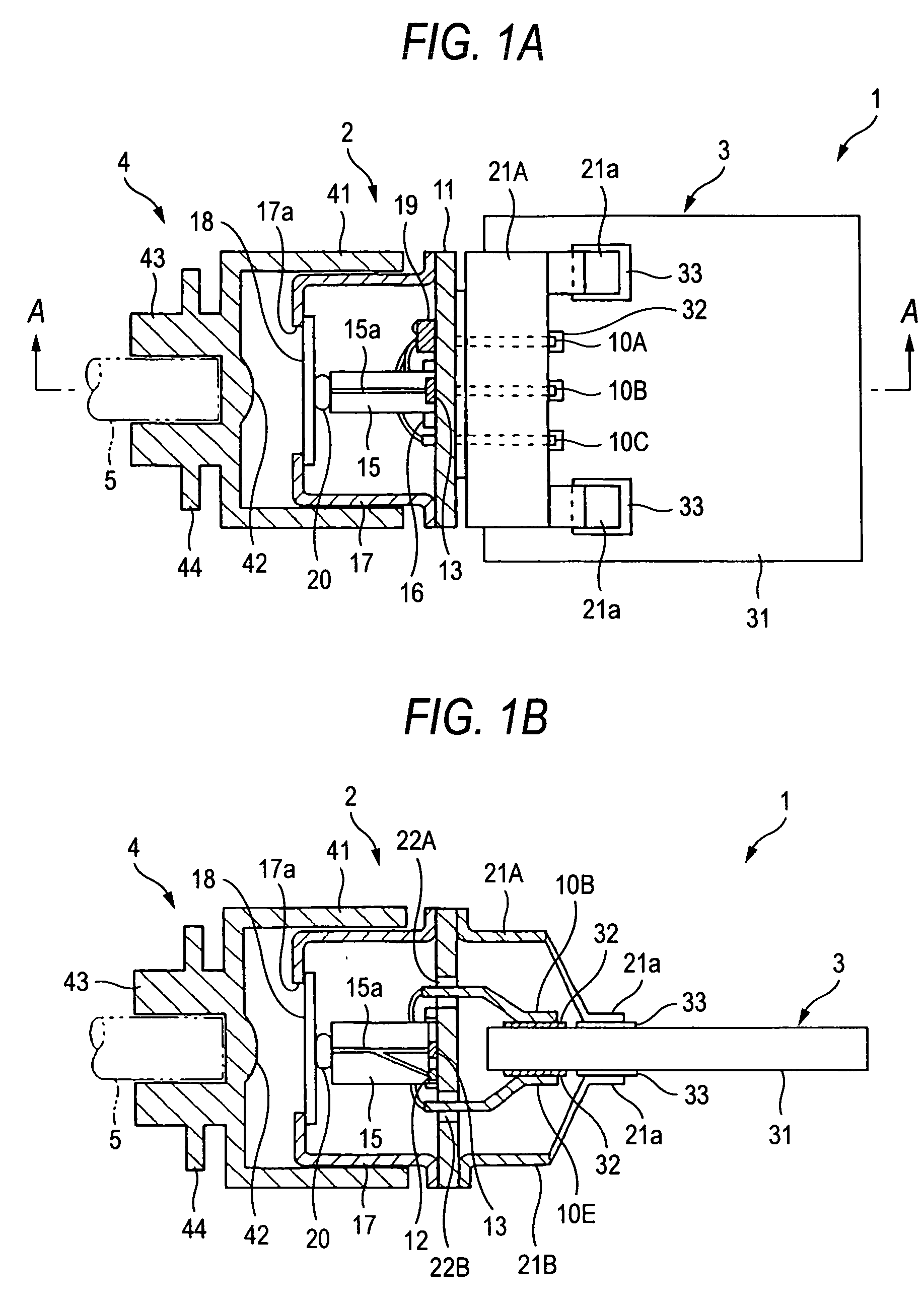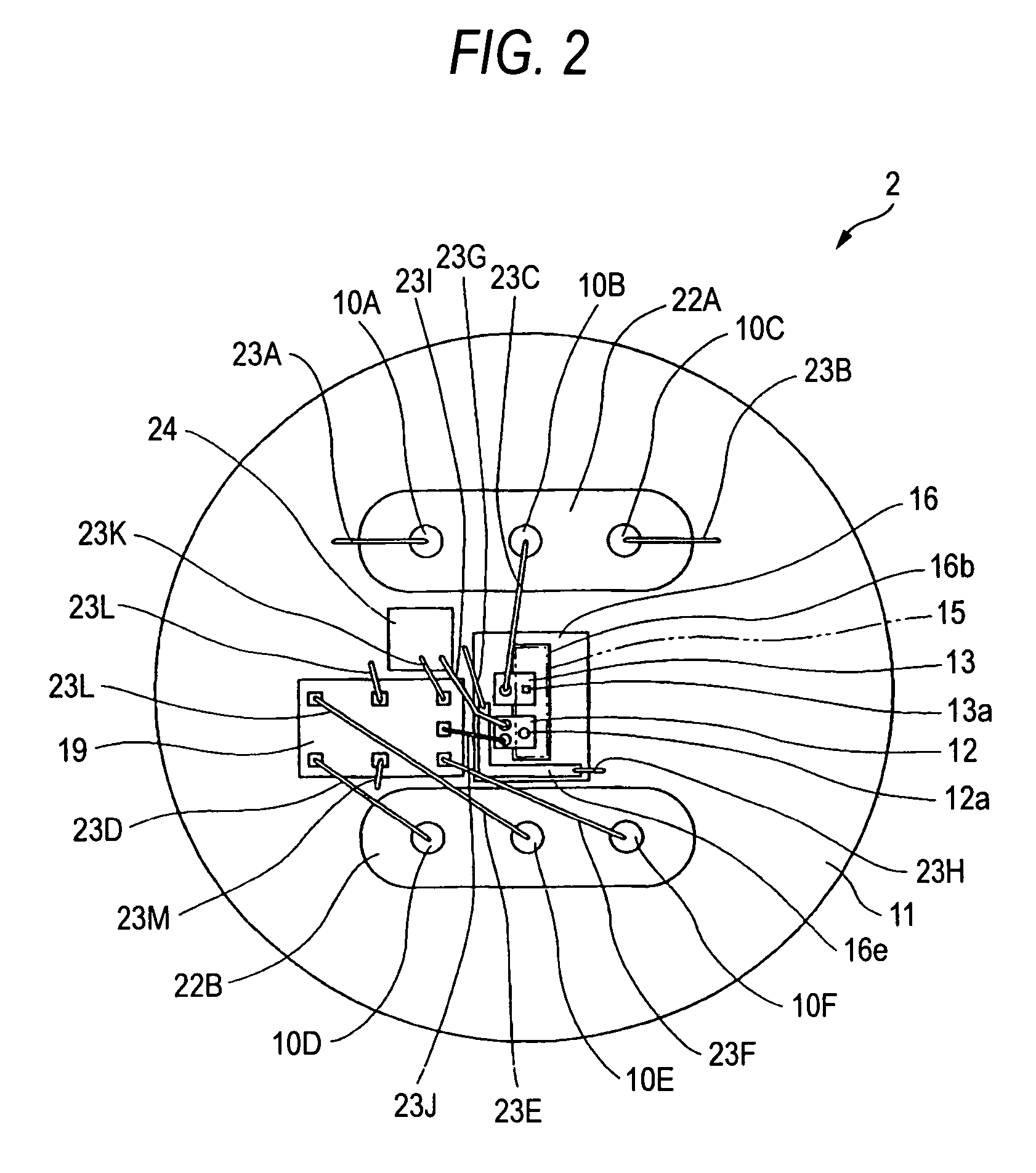Optical transmitter-receiver, optical transmitter-receiver module, and optical communication device
a technology of optical transmitter and optical communication device, applied in the direction of instruments, photometry using electric radiation detectors, optical elements, etc., can solve the problems of large size of optical coupling portion, difficult to reduce the size and/or integrate constructive elements, and degrading the light receiving sensitivity of light receiving elements, etc., to reduce cross-talk, reduce the size, and reduce the effect of device siz
- Summary
- Abstract
- Description
- Claims
- Application Information
AI Technical Summary
Benefits of technology
Problems solved by technology
Method used
Image
Examples
first embodiment
[0046]FIGS. 1A and 1B show an optical transmitter-receiver according to a first embodiment of the present invention, in which FIG. 1A is a plan view thereof and FIG. 1B is a cross sectional view taken along a line A-A in FIG. 1A. FIG. 2 shows a detailed construction of the optical module shown in FIG. 1. Incidentally, a cross section of the optical module is shown in FIG. 1A. FIG. 2 shows mounting parts on a stem and an optical waveguide is shown by imaginary chain lines.
[0047] The optical transmitter-receiver 1 includes a CAN package type optical module 2 to which an optical fiber 5 as an optical transmission medium is connected through a coupler member 4, a circuit board 3 mounting the optical module 2 thereon and transmitting / receiving an electric signal with respect to the optical module 2 and shield members 21A and 21B provided on the circuit board 3, for shielding electrode pins 10 (10A to 10F) as a wiring portion of the optical module 2.
[0048] The optical module 2 includes ...
second embodiment
[0082]FIGS. 4A and 4B show an optical transmitter-receiver according to the second embodiment of the present invention, in which FIG. 4A is a bottom view thereof and FIG. 4B is a cross section taken along a line B-B in FIG. 4A.
[0083] The second embodiment differs from the first embodiment in that the shield member 21B on the receiving side is replaced by a shield member 21C having lower rigidity, the transmitting side shield member 21A is removed, grounding electrode pins 25A and 25B are provided in the vicinity of the opposite sides of the receiving side electrode pins 10D to 10F and the grounding electrode pins 25A and 25B are connected to the solder pads 33. The other configurations are similar to those of the first embodiment.
[0084] The shield member 21C may be formed from, for example, a copper foil having low rigidity and covers the electrode pins 10D to 10F. Connecting pieces 21a to be connected to the solder pads 33 extend from both sides of the shield member 21C.
[0085] S...
third embodiment
[0089]FIGS. 5A and 5B show an optical transmitter-receiver according to the third embodiment of the present invention, in which FIG. 5A is a plan view thereof and FIG. 5B is a side view thereof. FIGS. 6A and 6B are development of a flexible circuit board on which the optical module is mounted, in which FIG. 6A is a plan view and FIG. 6B is a cross section taken along a line C-C in FIG. 6A.
[0090] The optical transmitter-receiver 1 according to the third embodiment includes the optical module 2 and the circuit board 3 of the first embodiment and a flexible circuit board 6 connecting the optical module 2 to the circuit board 3. The construction of the optical module 2 is similar to the first embodiment shown in FIGS. 1A, 1B and 2. In the third embodiment, however, the electrode pins 10A to 10F are shortened compared with the first embodiment since these are mounted on the thin flexible circuit board 6.
[0091] As shown in FIG. 5B, the circuit board 3 has a connector 34 for connecting t...
PUM
 Login to View More
Login to View More Abstract
Description
Claims
Application Information
 Login to View More
Login to View More - R&D
- Intellectual Property
- Life Sciences
- Materials
- Tech Scout
- Unparalleled Data Quality
- Higher Quality Content
- 60% Fewer Hallucinations
Browse by: Latest US Patents, China's latest patents, Technical Efficacy Thesaurus, Application Domain, Technology Topic, Popular Technical Reports.
© 2025 PatSnap. All rights reserved.Legal|Privacy policy|Modern Slavery Act Transparency Statement|Sitemap|About US| Contact US: help@patsnap.com



